Embarking on the path of homesteading can lead to a life teeming with self-sufficiency and a profound connection to the environment. Those who choose to live off-grid often find themselves in a seamless dance with nature, embracing a lifestyle that prioritizes simplicity, hard work, and the satisfaction of being the architects of their own sustenance. They might start with growing herbs on a windowsill, but soon, they’re harvesting rainwater and powering their homes with the sun and wind.
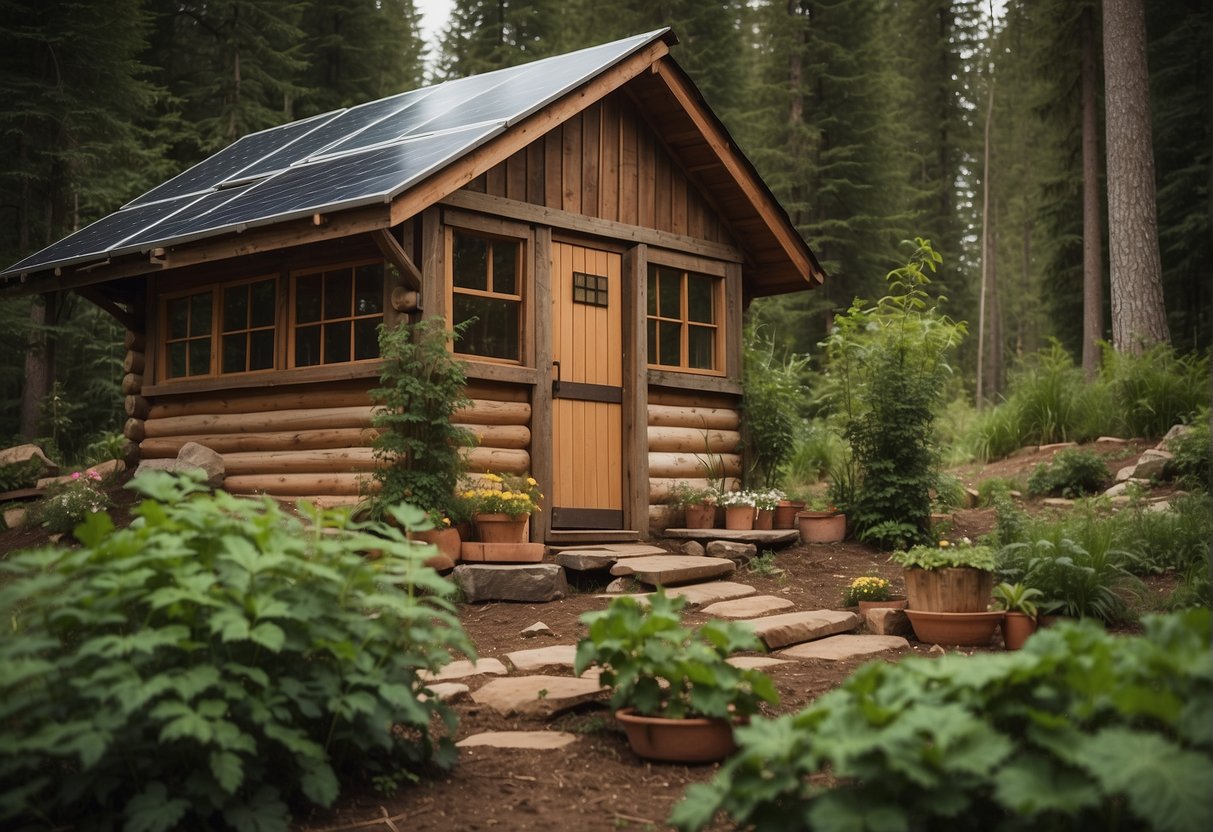
Life away from the conventional grid isn’t just about the land or the solitude; it represents a deliberate journey toward independence and resilience. Homesteaders possess a unique set of skills that enable them to flourish outside the urban sprawl — from canning their harvest to fixing a solar panel. This lifestyle isn’t measured by the standard nine-to-five rhythm but by the seasons and the health of the crops they cultivate and animals they raise.
They don’t just crave a life of quiet — they actively create it with their choices each day. Whether by valuing privacy or cultivating essential skills, homesteaders shape a world where they can live with minimal reliance on external resources. This self-directed life weaves together a tapestry of practices that have sustained people for generations, showcasing a harmonious blend of old traditions and innovative ways to navigate modern challenges.
Understanding the Homesteader Lifestyle
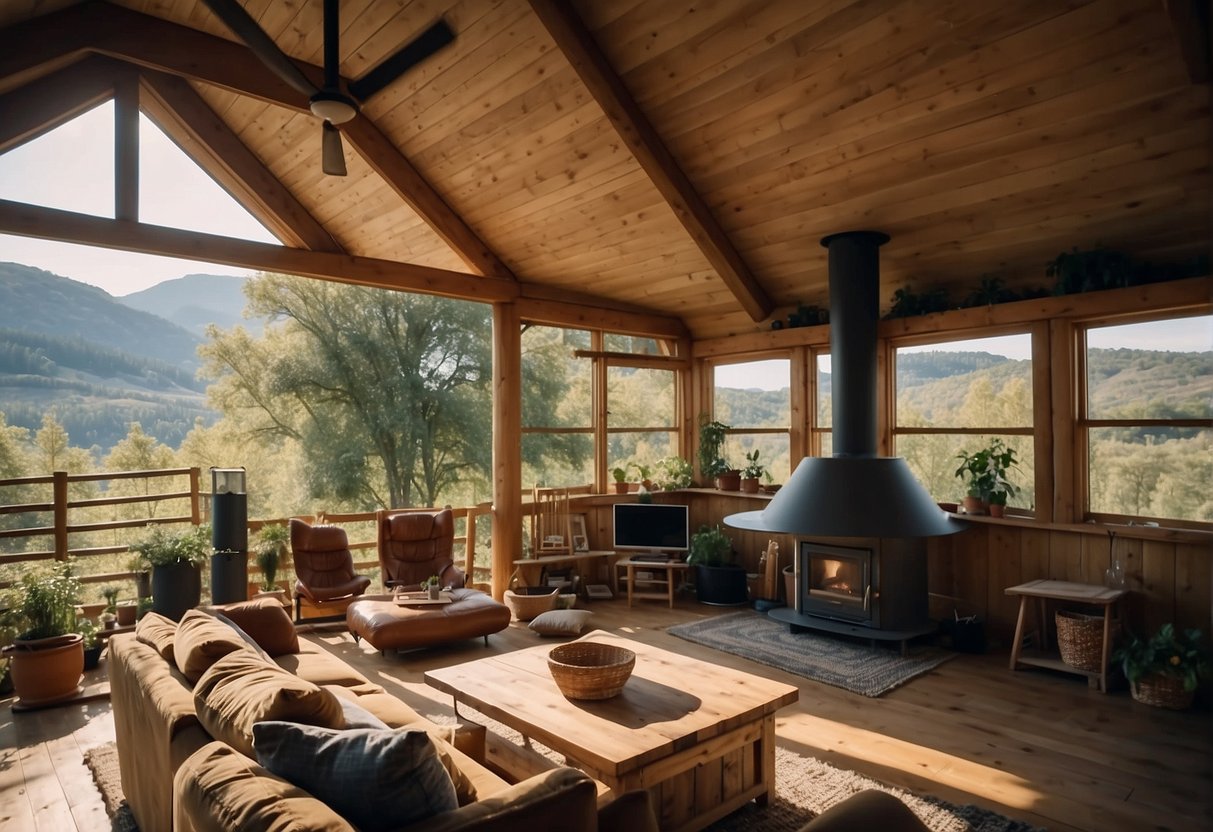
Homesteaders often embrace a lifestyle that’s defined by self-sufficiency and sustainability. They are known for living off-grid and maintaining a form of independence from mainstream utilities and supply chains.
Defining Off-Grid Living
Off-grid living refers to a lifestyle choice that eliminates dependence on public utilities like electricity, water, and sewage systems. Homesteaders living off the grid typically use renewable energy sources such as solar panels or wind turbines, harvest rainwater, and may use composting toilets to manage waste.
The Appeal of Self-Sufficient Living
The core attraction to self-sufficient living is the empowerment it offers individuals and families. They produce their own food through gardening and animal husbandry, which can lead to healthier eating habits and reduced grocery bills. Homesteaders find reward in the skills they cultivate, from canning and preserving food to basic carpentry and mechanical repairs.
Homesteading Vs. Off-Grid Living
While the terms are often used interchangeably, homesteading and off-grid living can exist independently. One can homestead in a rural or urban setting while still connected to local utilities. Conversely, living off-grid doesn’t necessarily mean one is homesteading; it could simply be a lifestyle choice focused on energy independence. However, both lifestyles highlight the dedication to a sustainable and self-sufficient lifestyle.
Planning Your Homestead
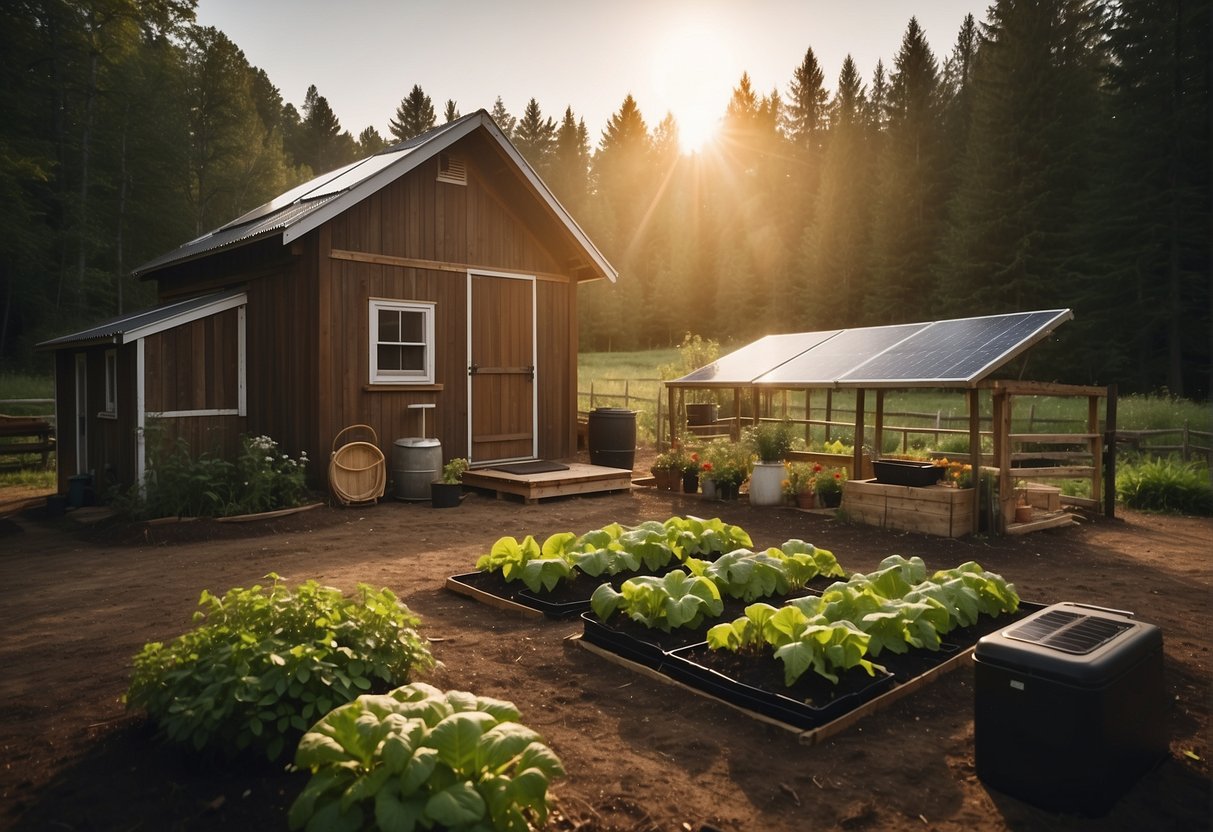
When it comes to setting up a homestead, one’s success often hinges on meticulous planning. From choosing a location to understanding the climate and soil for gardening, and considering the size of the property, each aspect plays a crucial role in developing a sustainable and efficient homestead.
Choosing the Right Location
A person should consider accessibility to resources, community connections, and potential for growth when selecting a location. They need to ensure the site aligns with their vision of self-sufficiency and lifestyle preferences. Proximity to markets or like-minded neighbors can support a homesteader’s endeavors.
Assessing Climate and Soil for Gardening
Climate dictates the types of crops that can flourish, while soil quality can determine the level of effort needed for a productive garden. Homesteaders should assess the soil’s texture, nutrient content, and drainage capacity. They could consider tests to analyze the soil’s ability to support their intended agricultural pursuits.
Sizing Up Your Property
The size of one’s property influences the scale and type of homesteading activities one can undertake. Smaller plots may necessitate more innovative approaches to space management, whereas larger tracts allow for broader agricultural ventures and livestock. They should map out the available space to optimize land use, accounting for structures, gardens, and animal pastures.
Natural Resources and Sustainability
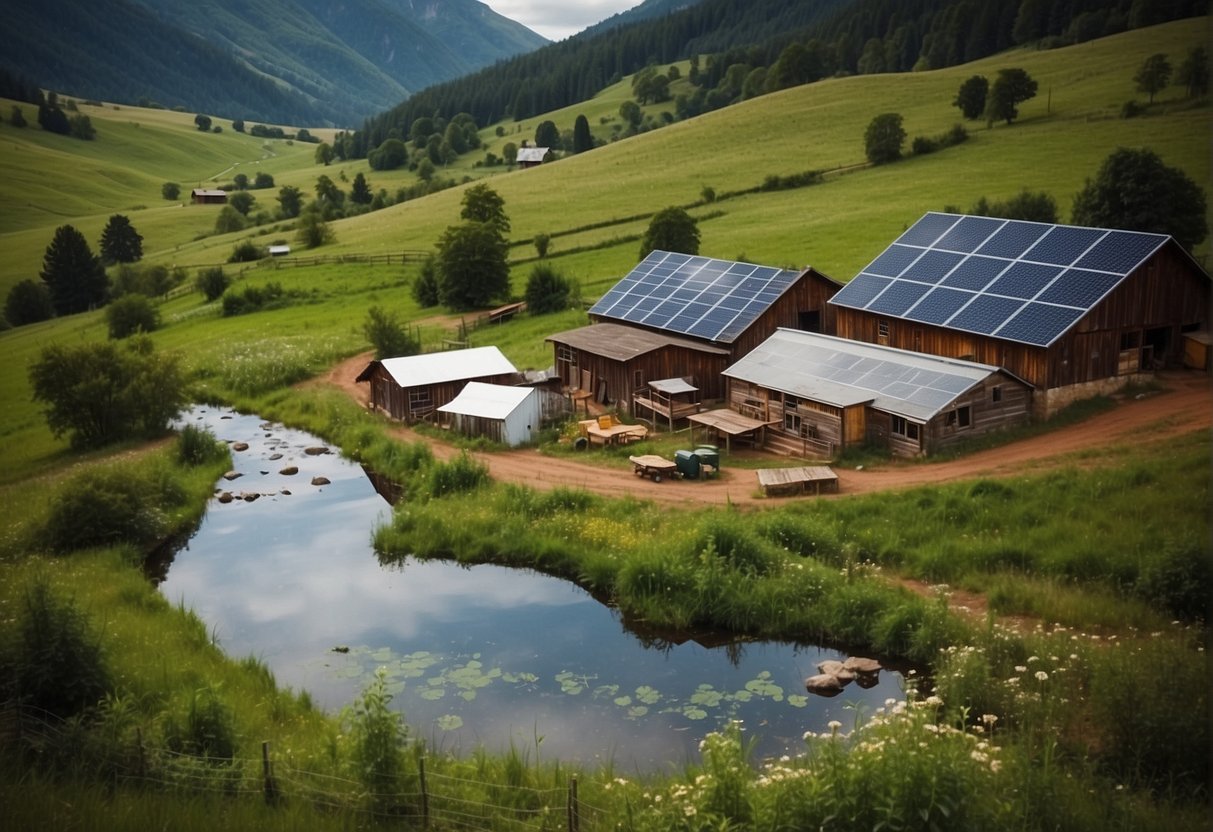
Embracing off-grid living means optimizing the use of natural resources with a strong focus on sustainability. A true homesteader recognizes that water sources, energy alternatives like solar and wind, and the stewardship of crops and livestock play pivotal roles in a sustainable lifestyle.
Finding a Reliable Water Source
A homesteader values the importance of securing a reliable water source—it is the lifeblood of the homestead. They often prioritize properties that offer natural springs or the capability for rainwater harvesting, ensuring that their water use does not diminish local ecosystems.
Harnessing Solar and Wind Energy
Installing solar panels or wind turbines is an impactful step towards sustainability. Solar energy provides clean power throughout the day, while wind energy can supplement power needs when conditions are favorable. A combination of both ensures a more constant supply of electricity, free from the grid.
Using the Land: Crops and Livestock
Efficient land use entails planting crops suited to the local climate and soil, maximising yields without excessive resource input. For livestock, sustainable practices include rotational grazing and ensuring breeds are well-suited to available pasture. This approach not only provides food but also maintains the health of the land.
Building Your Homestead
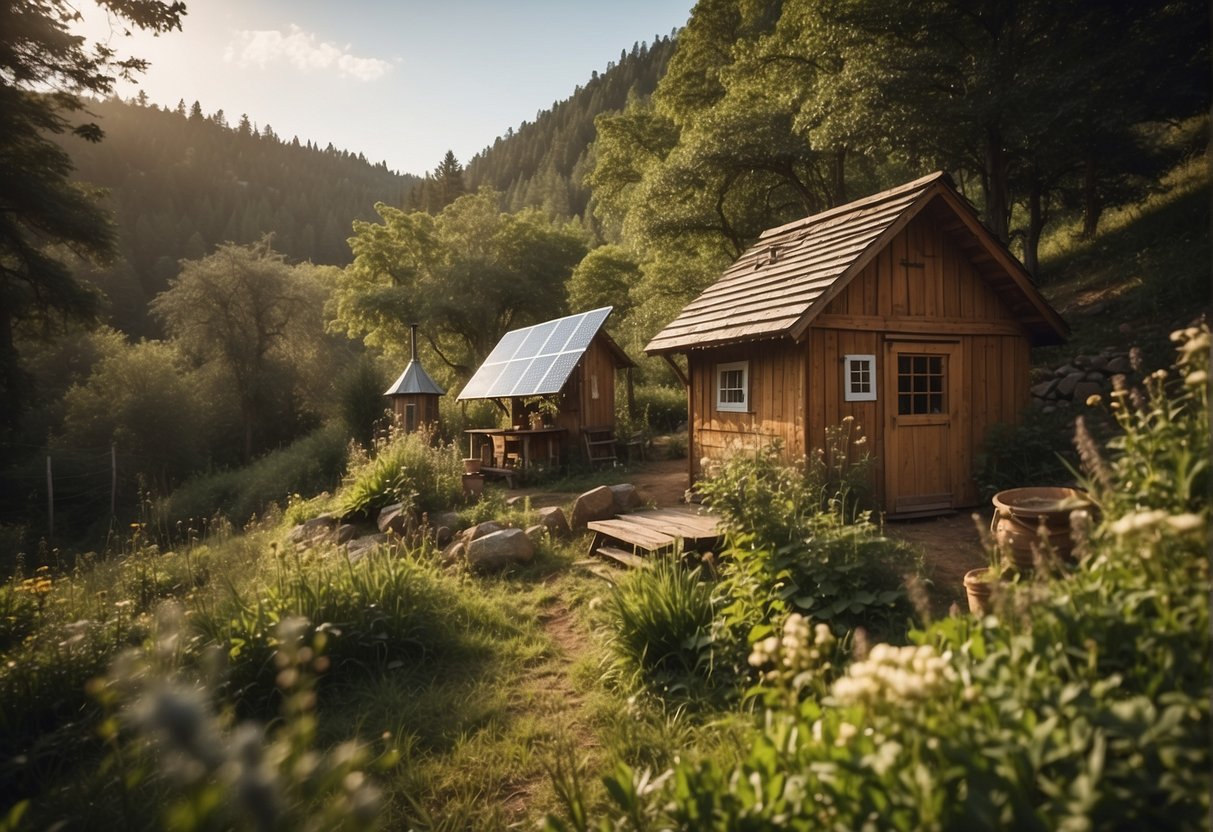
When diving into the realm of homesteading, one quickly understands the importance of building efficient structures and implementing reliable systems. This forms the backbone of a self-sufficient lifestyle, which often includes energy solutions tailored to off-grid living.
Constructing Essential Structures
They start with the basics: a sturdy home, barns for animals, and sheds for storage. Homesteaders often depend on a mix of purchased and DIY structures to create a functional living space. They should have a selection of essential tools: hammers, saws, and drills for constructing and maintaining their buildings. This practical approach allows for customization and personalization of their homestead, making it truly their own.
Installing Off-Grid Systems
Living off-grid means they can’t rely on municipal services. They need to set up systems for water collection and waste disposal. This includes digging wells, installing septic tanks, and setting up rainwater harvesting systems. Ensuring access to clean water and managing waste efficiently are non-negotiables for homesteaders who love being off the grid.
Energy Solutions: Solar and Generator Setups
Finally, they address their energy needs. Solar power is a popular choice, with many homesteaders installing panels to harness the sun’s energy. It’s sustainable and cuts down on utility bills. But they are realistic; they know that solar isn’t always enough. That’s where generators come in handy. They often opt for a dual-setup: solar for day-to-day use and a generator for backup or high-demand periods. It’s about balancing eco-friendliness with practicality.
Cultivating Food and Gardening
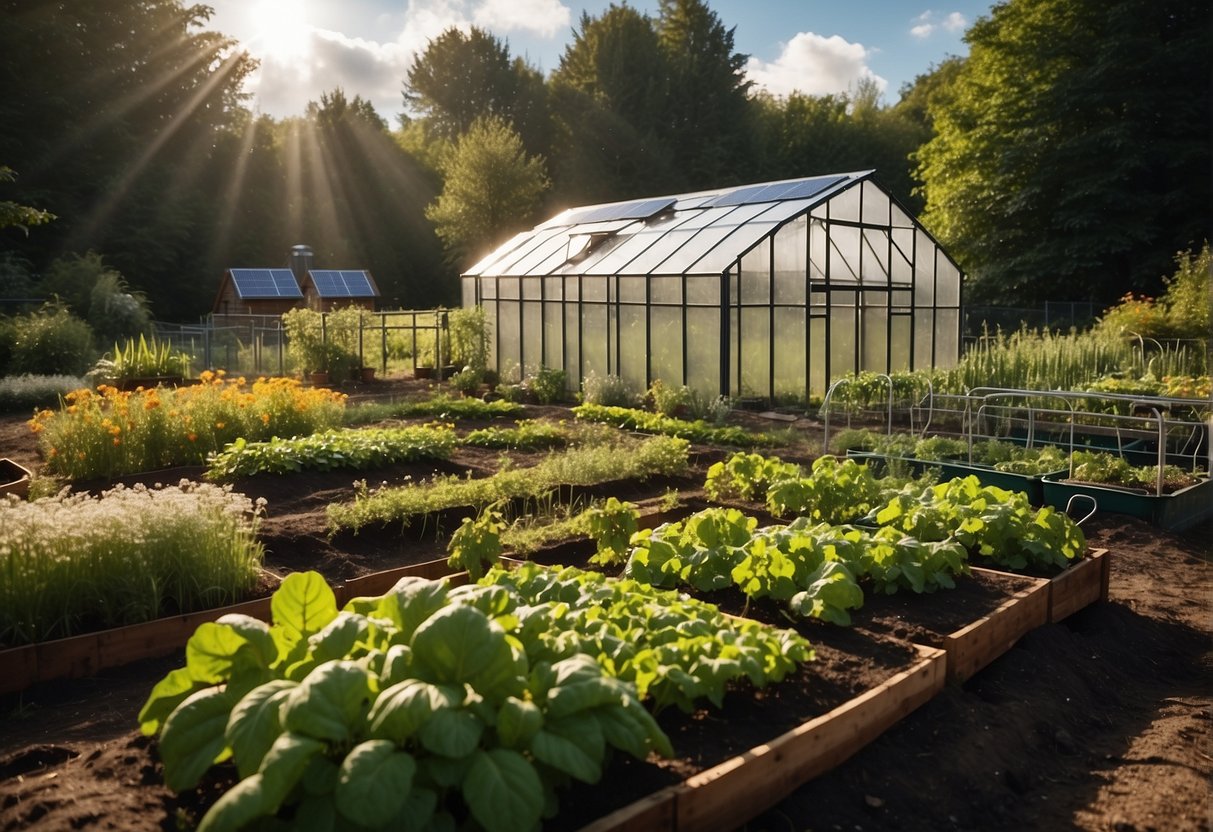
Cultivating food and gardening are cornerstones of the homesteading lifestyle. They take dedication and skill, transforming seedlings into bountiful harvests and fostering a sustainable food source right in one’s own backyard.
Growing Vegetables and Fruits
For many homesteaders, the ability to grow their own vegetables and fruits is essential. They typically start with easy-to-grow options like lettuce, tomatoes, and berries, using techniques that maximize their space, such as vertical gardening or companion planting. Success hinges on understanding the local climate and soil conditions, as well as committing to regular maintenance like watering and weeding.
Raising Chickens and Other Livestock
Keeping chickens is often a homesteader’s first foray into raising livestock. They provide a steady supply of eggs and, in some cases, meat. Care involves ensuring proper shelter, protection from predators, and a diet that might include kitchen scraps and foraged food. As one gains experience, they may branch out to include goats or bees, which offer additional resources like milk and honey.
Planning Your Harvest and Food Preservation
Effective homesteaders plan their harvest schedules carefully to ensure continuous food supply. Food preservation techniques such as canning and dehydration allow them to enjoy the fruits of their labor year-round. They often have pantries stocked with jars of preserved tomatoes, pickles, and fruit jams, as well as dehydrated herbs and vegetables for easy storage and use in the off-season. Homesteaders take great pride in this self-reliance, which is the heartbeat of their lifestyle.
Skills for Independence
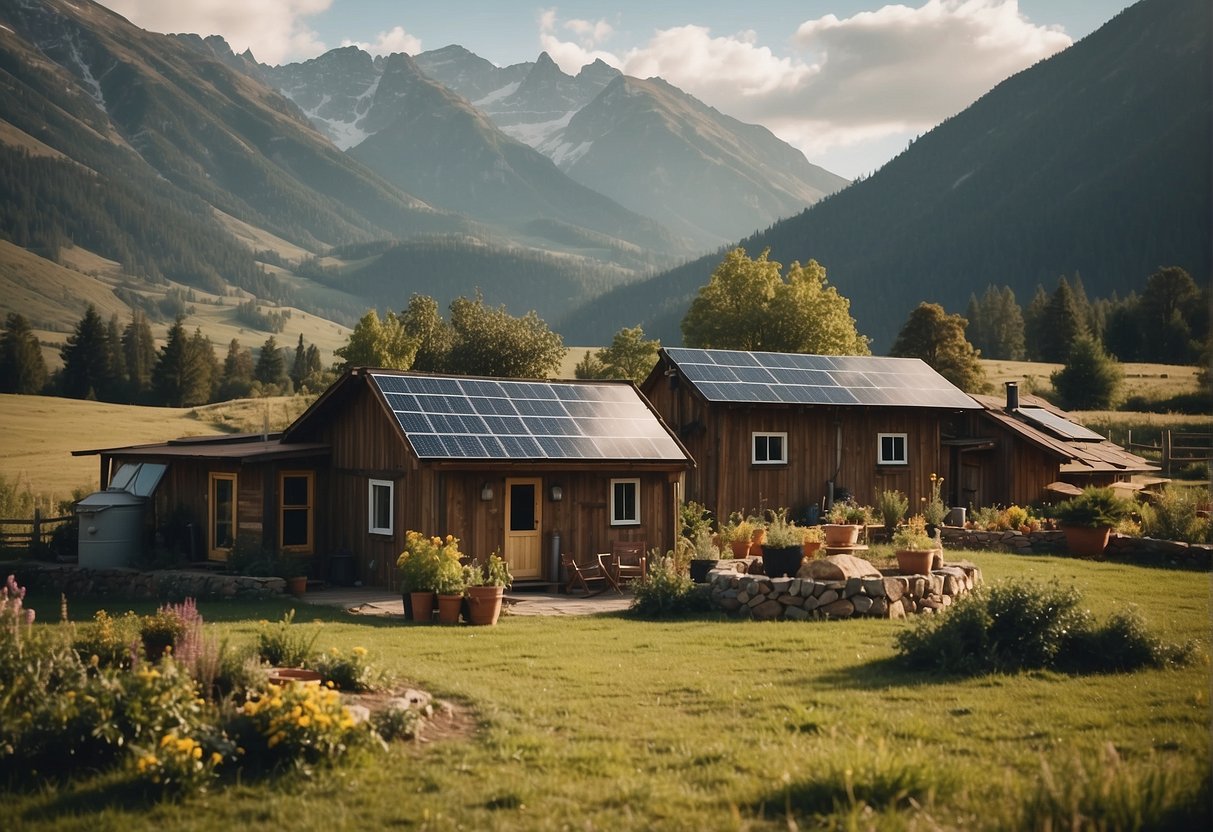
One’s autonomy on a homestead is solidified through acquiring essential skills. From making repairs to preserving harvests, these abilities anchor the self-sufficient lifestyle.
Developing DIY and Crafting Abilities
Homesteaders often become jacks-of-all-trades to maintain their independence. A homesteader might repurpose old materials into new tools or fix a leaky faucet with ease. Crafting abilities are not just about creativity; they’re necessities that save money and a trip to the store.
Mastering Food Preservation Techniques
With the seasons dictating produce availability, food preservation becomes paramount. They can and dehydrate the summer’s bounty to enjoy during winter. Techniques like fermentation also offer health benefits beyond mere sustenance, adding both flavor and nutrition to a homesteader’s diet.
Learning Animal Husbandry
Caring for animals is at the heart of many homesteads. One doesn’t just feed and shelter them; they understand each animal’s role in the ecosystem of their land. For example, chickens provide eggs while also controlling pests and fertilizing the garden. Successful animal husbandry requires a commitment to learning about each species’ specific needs.
Off-Grid Technology and Infrastructure
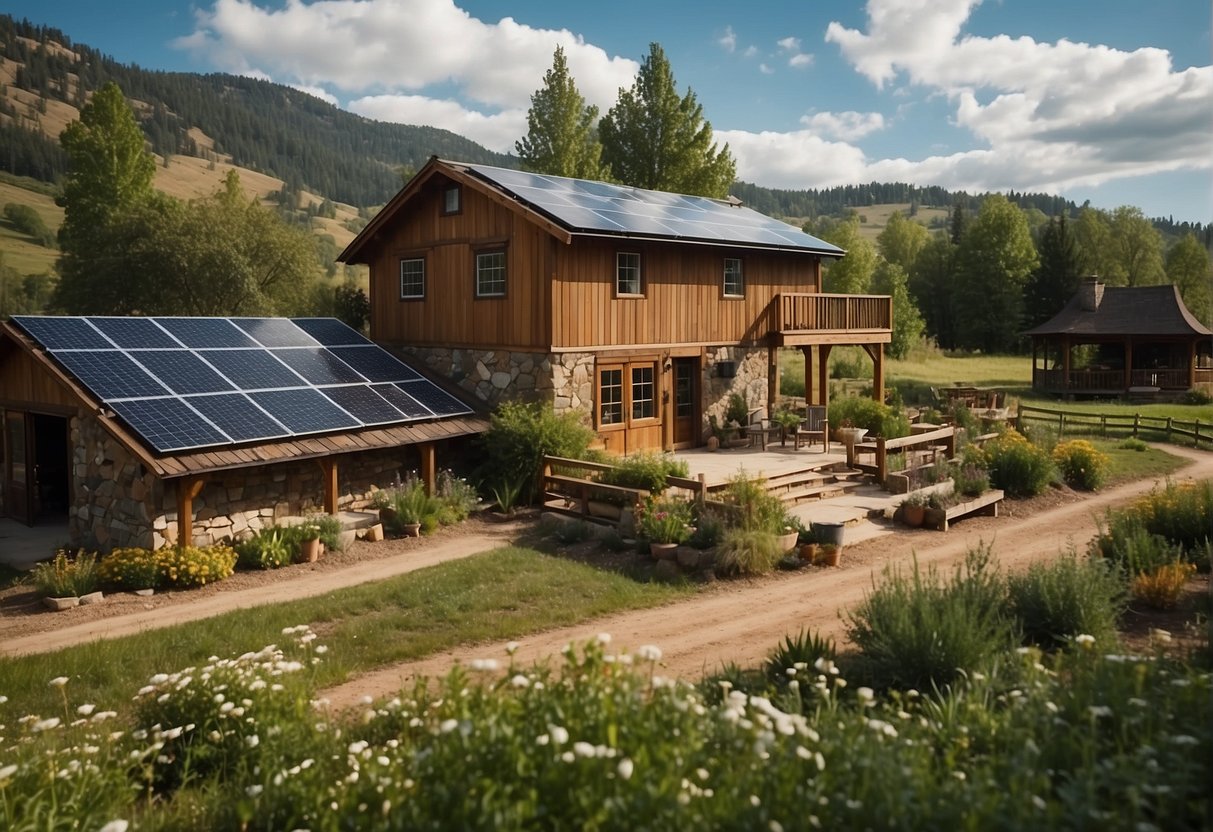
Off-grid living demands a certain level of self-reliance when it comes to technology and infrastructure. A homesteader needs robust systems in place to provide water, energy, and communication, crucial for a comfortable and efficient off-grid life.
Setting Up Water and Irrigation Systems
For a homesteader, having a reliable water system is a top priority. They often employ gravity-fed irrigation systems or use energy-efficient pumps to draw water from natural sources. Such setups provide a sustainable way to water crops and meet daily water needs without relying on municipal supplies. For instance, clever use of water tanks can capture and store rainwater, while incorporating filters ensures a clean supply for personal use.
Energy Storage: Batteries and Backup
Going off-grid doesn’t mean giving up electricity. Instead, homesteaders store energy using batteries as part of solar or wind power systems. The choice of batteries is crucial – deep-cycle lead-acid or lithium-ion varieties are common, each with their own advantages for longevity and storage capacity. Moreover, having a backup generator or alternative power source ensures that homesteaders stay powered through cloudy days or when the wind isn’t enough to turn turbines.
Maintaining Internet and Communication
Even in remote locations, staying connected is vital. Homesteaders frequently turn to satellite internet to maintain an online presence, operate businesses, or simply stay in touch with the world. For many, a stable internet connection is non-negotiable, allowing access to remote work opportunities, online education, and emergency services. They often augment their communication setup with additional tools like ham radios or other reliable communication systems to guarantee connections in all conditions.
Community and Relationships
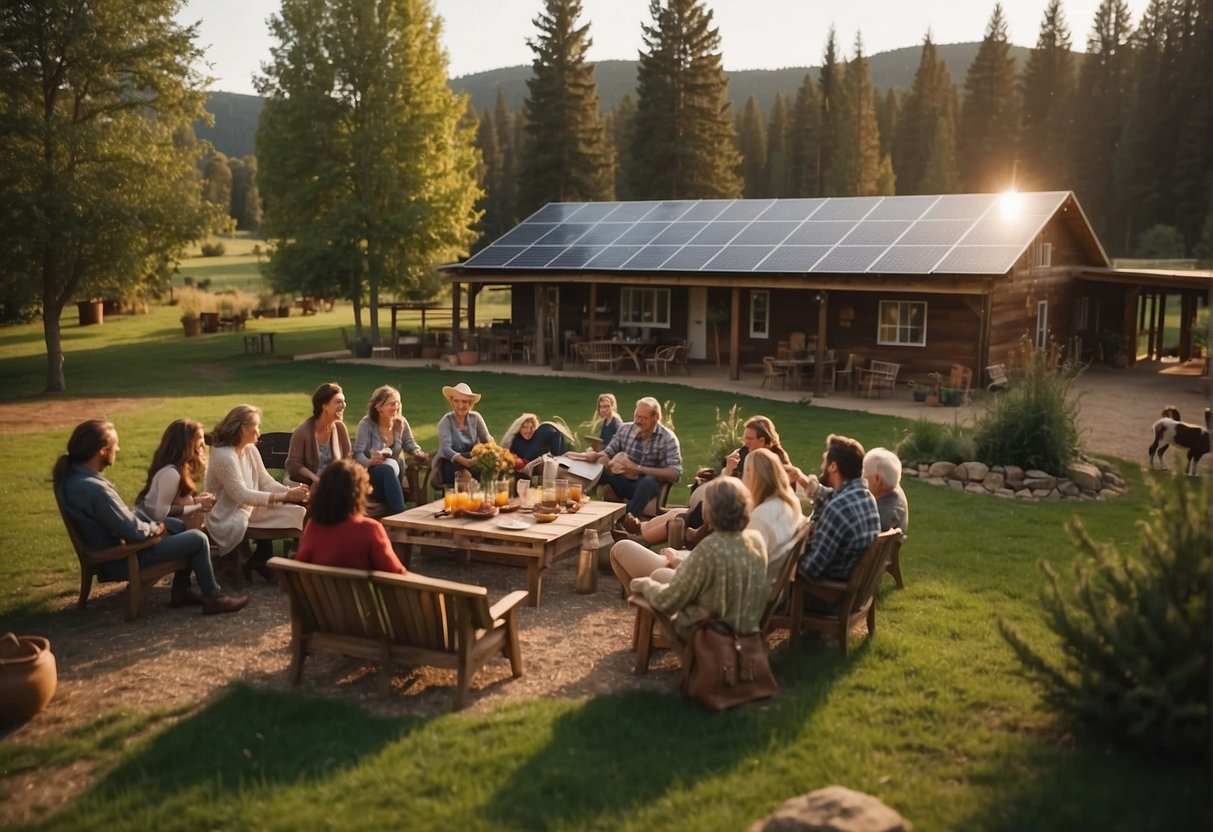
Building a community and nurturing relationships are pillars of off-grid living for a homesteader. They provide both a practical support system and a sense of belonging.
Building Relationships with Neighbors
Homesteaders often find themselves forming bonds with their neighbors. Whether they’re trading expertise, borrowing tools, or helping each other with large projects, these relationships are the bedrock of rural living. A friendly wave can lead to long-lasting friendships that make the off-grid lifestyle not just feasible, but enjoyable.
Participating in Farmers Markets and Local Economy
They don’t just grow food; they are a part of a local economy. By selling goods at farmers markets, homesteaders engage with customers and other vendors, becoming integral to the local commerce. It’s here that they may find friends with shared interests in sustainable living.
- Markets Attended: Weekly
- Goods Sold: Produce, homemade goods
- Community Interaction: High
Creating a Supportive Network
A supportive network is crucial for off-grid success. This network might include fellow homesteaders, but also extends to online communities and forums where they can share advice and experiences. In times of need, a well-established network provides invaluable support, ensuring that one never truly goes it alone.
Education, Health, and Lifestyle
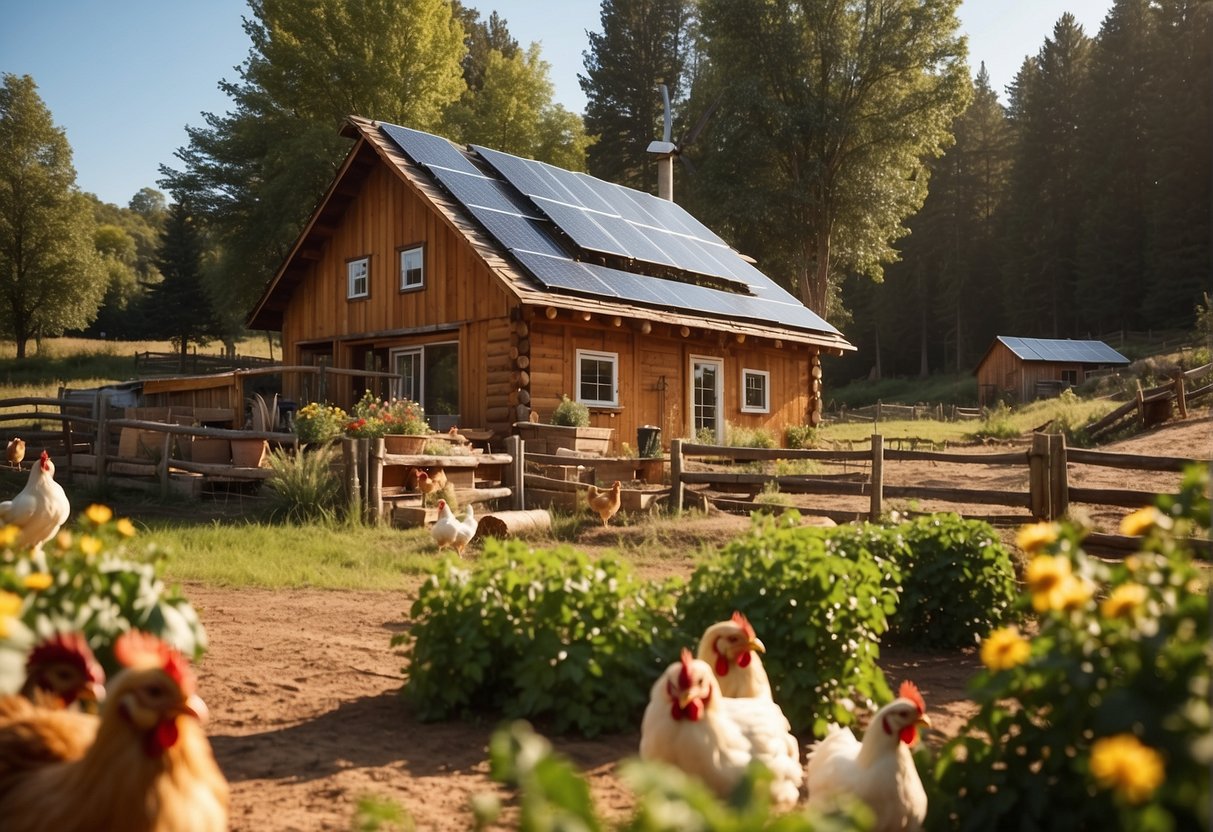
Homesteaders who embrace off-grid living often prioritize continuous learning, maintaining their health through natural means, and ensuring a balance between their work and leisure to sustain their lifestyle.
The Role of Education in Homesteading
Education is a cornerstone of homesteading, as self-reliance requires a diverse set of skills ranging from agriculture to carpentry. Homesteaders might acquire these skills through hands-on experience, workshops, and reading extensive resources like how to become a homesteader. They often share this knowledge with their community, fostering a culture of learning and self-improvement.
Staying Healthy and Access to Medicine
Access to conventional healthcare can be limited off-grid, prompting homesteaders to adopt preventive measures to safeguard their health. They often turn to home remedies and natural medicines, and prioritize staying active to prevent illness. However, they also understand when professional medical attention is necessary and include provisions for emergency situations in their planning.
Balancing Work and Leisure
Sustainability in off-grid homesteading is not just about the environment; it’s also about creating a sustainable routine that includes downtime. Homesteaders strive for efficiency in their daily tasks to make room for relaxation and family time. Leisure activities often revolve around improving their skills or enjoying the fruits of their labor, such as cooking with homegrown produce or crafting with materials they’ve produced.
Challenges and Problem Solving
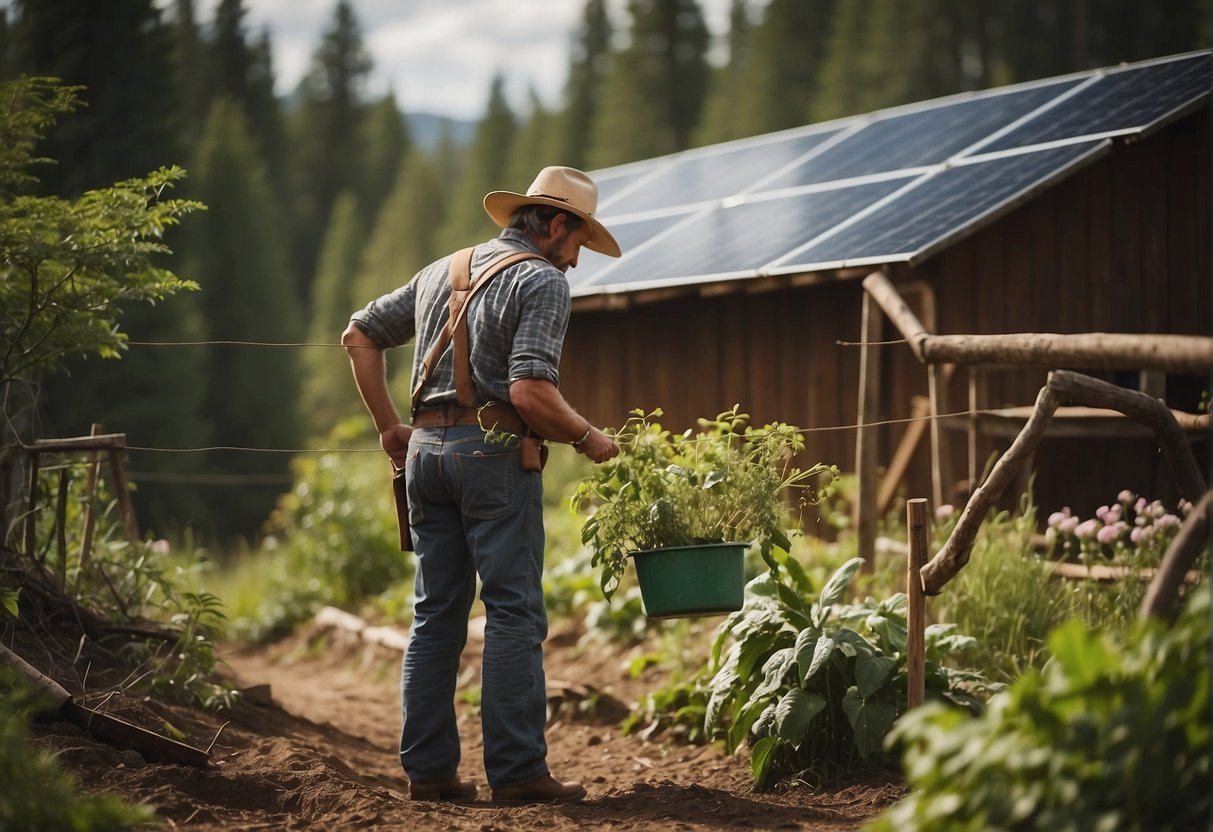
In the world of off-grid homesteading, challenges are the norm, and problem-solving is a critical skill. They must be adept at tackling unexpected issues, managing costs effectively, and adapting to the unique demands of an off-grid lifestyle.
Dealing with the Unexpected
Homesteaders often face unforeseen events such as extreme weather or equipment failures. They need to be resourceful, finding creative solutions like improvising with materials on hand or utilizing alternative power sources when traditional ones fail. Resilience is key, as they must repeatedly overcome hurdles that city dwellers rarely encounter.
Economic Factors and Cost Management
Cost management is an ongoing concern for off-gridders. They frequently navigate financial challenges by prioritizing essential spending and investing in cost-saving measures long term. For example, to reduce energy-related expenses, they might install solar electricity systems and implement strict budgets to steer clear of unnecessary outlays.
Adapting to the Off-Grid Challenges
Off-grid living demands a unique set of skills and attitudes. Homesteaders must master a variety of tasks, from growing food to maintaining their shelter and energy systems. They often adopt a DIY attitude, learning labor-intensive skills like carpentry or acquiring self-sufficiency knowledge. Constancy in learning and adaptation is the homesteader’s mantra for thriving amidst the off-grid challenges.
Final Thoughts
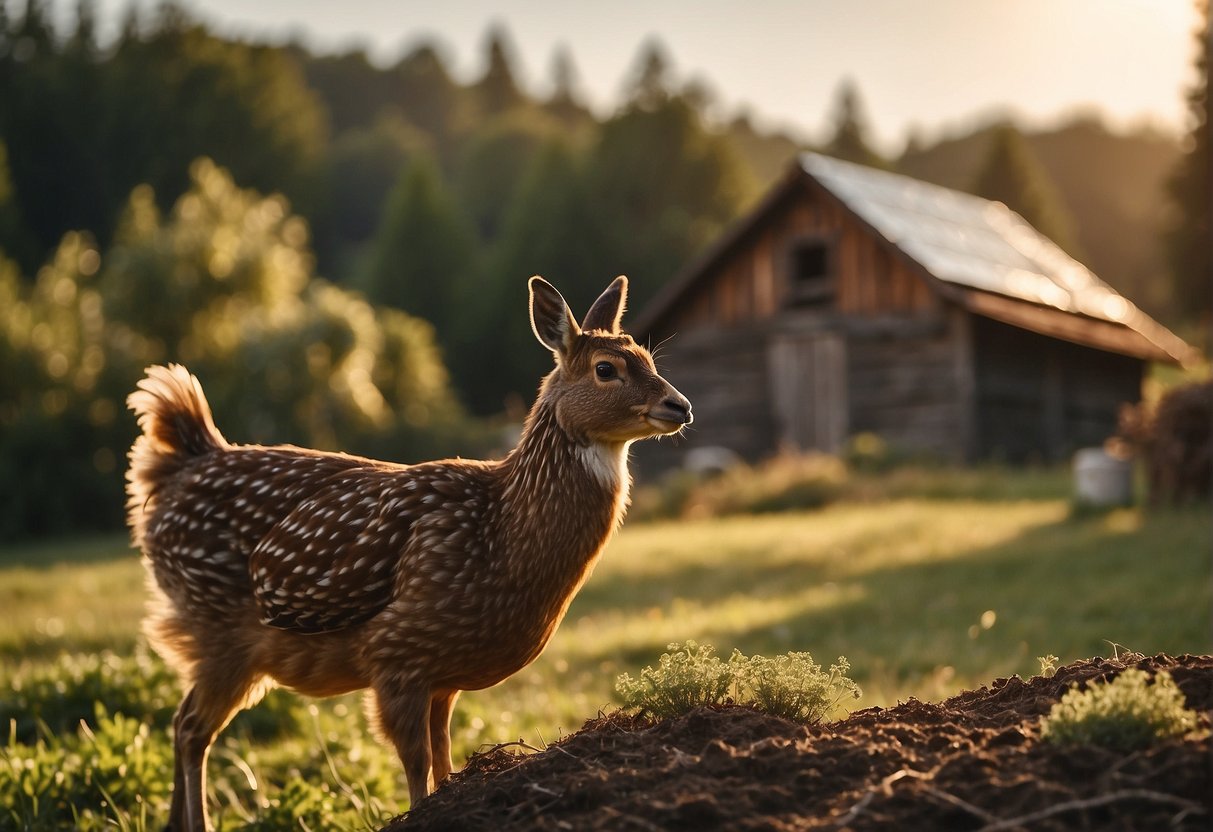
Embracing off-grid living and homesteading speaks to a deep-seated yearning for self-reliance and a sustainable lifestyle. Those who take up this mantle often find themselves setting personal goals that align with the rhythms of nature and the heartbeats of their homestead.
A homesteader’s daily routine is anything but mundane; every day brings a new set of challenges and rewards, be it through tending to the garden, caring for livestock, or crafting homemade goods. The fruits of their labor are a testament to their dedication and hard work.
Sustainability isn’t just a buzzword for the off-grid enthusiast; it’s a guiding principle. They continuously explore innovative ways to reduce their environmental footprint, whether it’s through harnessing solar power or implementing water catchment systems.
Finally, the sense of accomplishment that comes from building a self-reliant life is profound. Off-grid living doesn’t just change one’s address—it transforms their worldview, offering up a life less encumbered by the trappings of modern society and more focused on the essentials of well-being.
In short, they aren’t just living—they’re flourishing, on their own terms.
